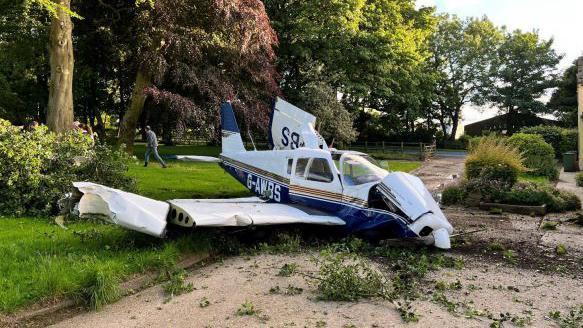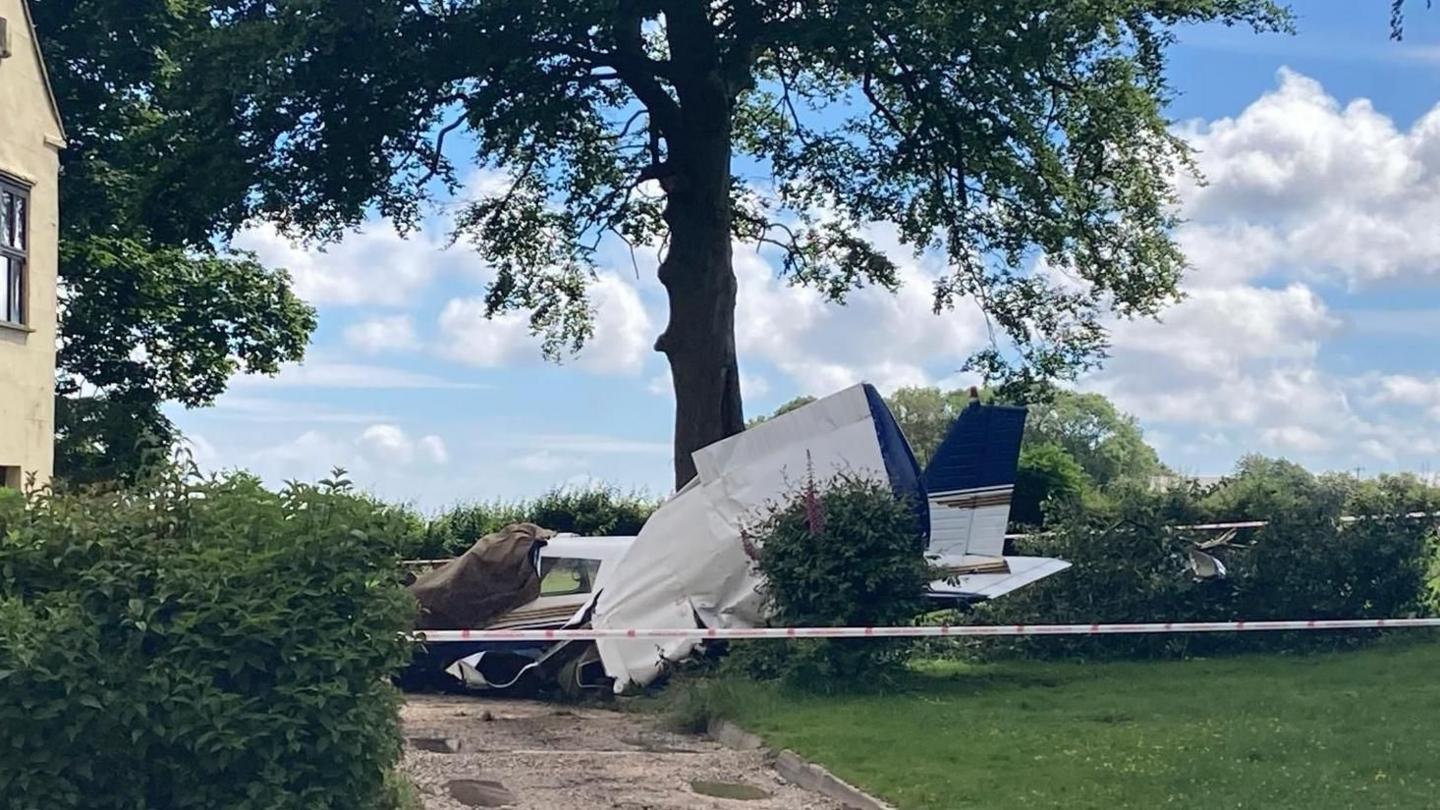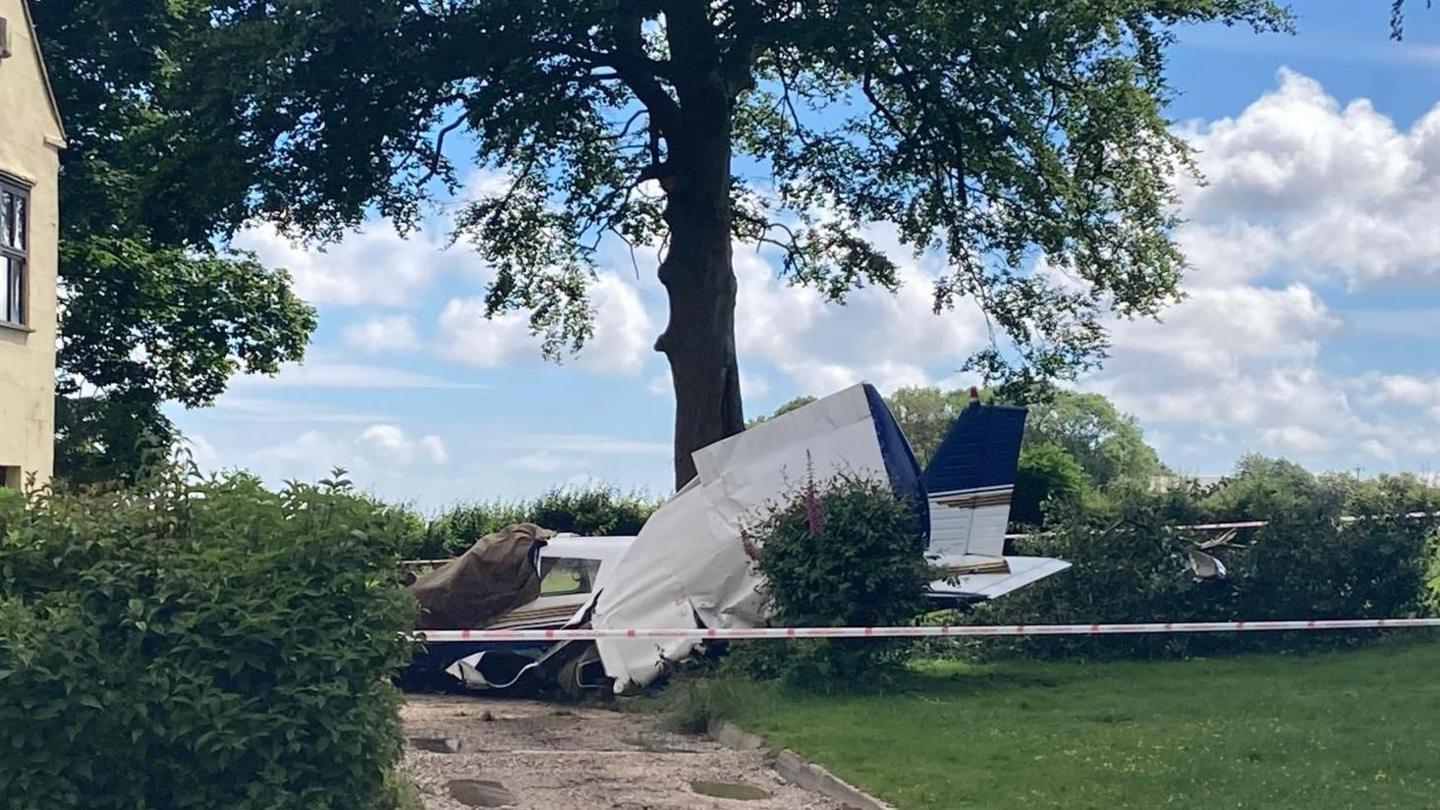Ice and wind may have caused plane crash - report

The Piper PA-28-140 light aircraft struck trees before crash landing on the driveway of a house close to Eddsfield Airfield
- Published
Ice and "gusty wind conditions" might have caused a private plane to hit trees before crashing on to the driveway of a home, according to a report.
The Air Accidents Investigation Branch (AAIB) said the aircraft was destroyed when it came down close to Eddsfield Airfield, near Langtoft, East Yorkshire, on the evening of 18 June.
The pilot and two passengers suffered only minor injuries and were able to exit unaided.
In the report, the AAIB said, external the wind might have been a factor in the crash and there was also a possibility the carburettor had iced up.
Soon after take-off, the Piper PA-28-140 clipped some 80ft tall trees at the far end of the airfield before crash landing on the driveway of a residence.
According to the report, the 50-year-old pilot held a private licence and had 1,475 hours of flying experience.
"He did not recall hearing the stall warner or experiencing any symptoms of a stall. The aircraft banked further to the left and the pilot directed it through the trees to the only piece of clear space that he could see," said the report.
"The aircraft came to rest in the garden and on the driveway of a local residence and was destroyed."

All those onboard suffered minor injuries
The AAIB said the plane's carburettor had been tested by an independent engine maintenance organisation and it was found to "perform normally" with no anomalies.
"It is the opinion of the pilot that either a power issue or the gusty wind conditions over the trees were causal factors in the accident," the report said.
"Whilst no evidence was found to explain a loss of power it was noted that there was a possibility of carburettor icing."
It further detailed how the plane had been parked for up to 20 minutes before take-off.
The AAIB said a build-up of ice was possibly caused by "the long taxi along the grass runway, late in the day".
"The pilot stated he will give more consideration to gusty wind conditions at low speed and the impact of obstacles such as trees, on the wind in the future," the watchdog added.
Listen to highlights from Hull and East Yorkshire on BBC Sounds, watch the latest episode of Look North or tell us about a story you think we should be covering here, external.
- Published19 June 2024
